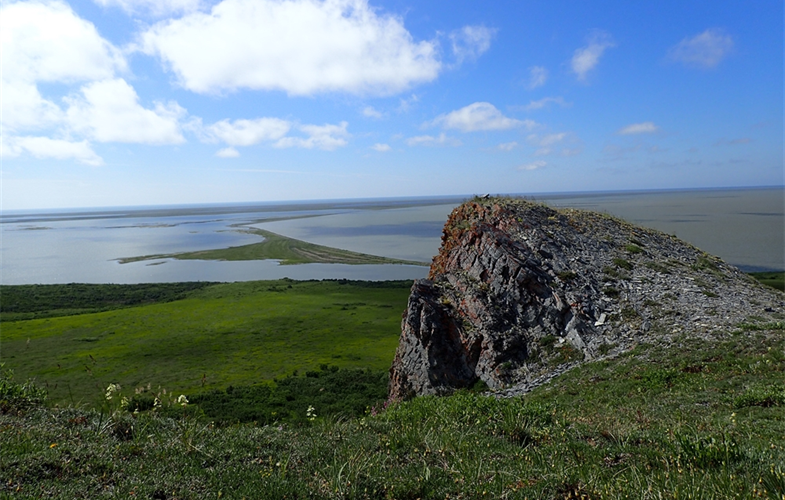Reviewed by Alex SmithOct 7 2022
The dynamic and unique features of coastal lagoon ecosystems in the Arctic Beringia Region were captured by a new scientific review article headed by WCS. It describes how climate change impacts and human progress could change these habitats.
 Krusenstern Lagoon - Cape Krusenstern National Monument. Image Credit: Marguerite Tibbles
Krusenstern Lagoon - Cape Krusenstern National Monument. Image Credit: Marguerite Tibbles
Lagoons comprise 40% of the coastline of the Chukchi Sea in Alaska, and they are essential elements of ecological protected regions—like Bering Land Bridge National Preserve, Cape Krusenstern National Monument, and Alaska Maritime National Wildlife Refuge. In addition, they are vital wild food harvesting sites for the Iñupiat People, who depend on subsistence gathering and hunting to uphold their food security.
The commonly witnessed fish species in the lagoons comprise vital sustenance harvest species such as Dolly Varden char, sheefish, and saffron cod, commercially vital chum salmon, and Beringia-endemic taxa such as Alaska blackfish and Bering cisco.
Caspian terns, tundra swans, Arctic terns, long-tailed jaegers, Sandhill cranes, and glaucous gulls are some of the birds that are seen feeding and nesting nearby the lagoons. Musk oxen, caribou, bearded seals, beluga, grizzly bears, and beavers are the mammal species that are commonly witnessed nearby or along lagoons.
Arctic, a scientific journal by the University of Calgary and the Arctic Institute of North America, published the review article in its September 2022 issue. Dr. Kevin Fraley is the lead author and a fisheries ecologist for Arctic Beringia Program of WCS, which is located in Fairbanks, Alaska.
This review is a culmination of a decade of fisheries monitoring and research efforts conducted by WCS and partners at these lagoons, and while there are still many aspects of these unique and important ecosystems to study, the article represents the best understanding of Arctic coastal lagoon structure and ecology to date.
Dr Kevin Fraley, Study Lead Author and Fisheries Ecologist, Arctic Beringia Program, Wildlife Conservation Society
To accomplish the article, the researchers produced results from long-term fisheries monitoring and research attempts performed at several lagoons inside Bering Land Bridge National Preserve, Cape Krusenstern National Monument, and Alaska Maritime National Wildlife Refuge.
Additionally, Traditional Ecological Knowledge associated with lagoon ecology and subsistence harvest practices was assigned to the researchers by Iñupiat and other Northwest Alaska habitats. Lastly, related published literature was studied and incorporated into the attempt.
One of the most significant concerns raised in the study was that water chemistry, physical layout, invertebrate diversity, and fish ecology (species diversity, abundance, behavior, diet, and survival) inside lagoons are driven by the existence of seasonal channels that connect lagoons to the Chukchi Sea.
Human development and climate change that affect the channels can have uneven, negative effects on lagoon ecologies as these channels are narrow, and their function and layout are prone to unrests like coastal erosion, storms, and reformation of beach gravel by artificial and natural means.
Even though this review characterizes a key benchmark in the studying process of the lagoons of the Arctic Beringia area, WCS and partners aim to pursue monitoring these habitats to discover any environmental shifts that are caused by anthropogenic and natural perturbations. Moreover, WCS will discover added research avenues to improve the comprehension of these exclusive ecosystems and uphold their conservation.
Although the lead organization of this publication is WCS, the article is a cooperative job that might have been accomplished without vital attempts from funding/partner organizations along with the US National Park Service and the Native Village of Kotzebue Environmental Program. The added financial support was offered by the National Fish and Wildlife Foundation.
Journal Reference:
Fraley, M. K., et al. (2022) The Forgotten Coast: A Synthesis of Current Knowledge of Southern Chukchi Sea Lagoon Ecosystems. Arctic. doi.org/10.14430/arctic75608.